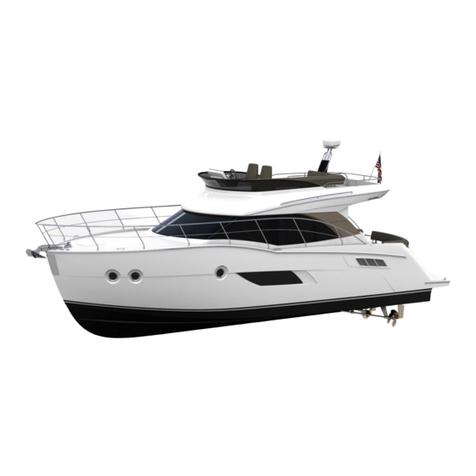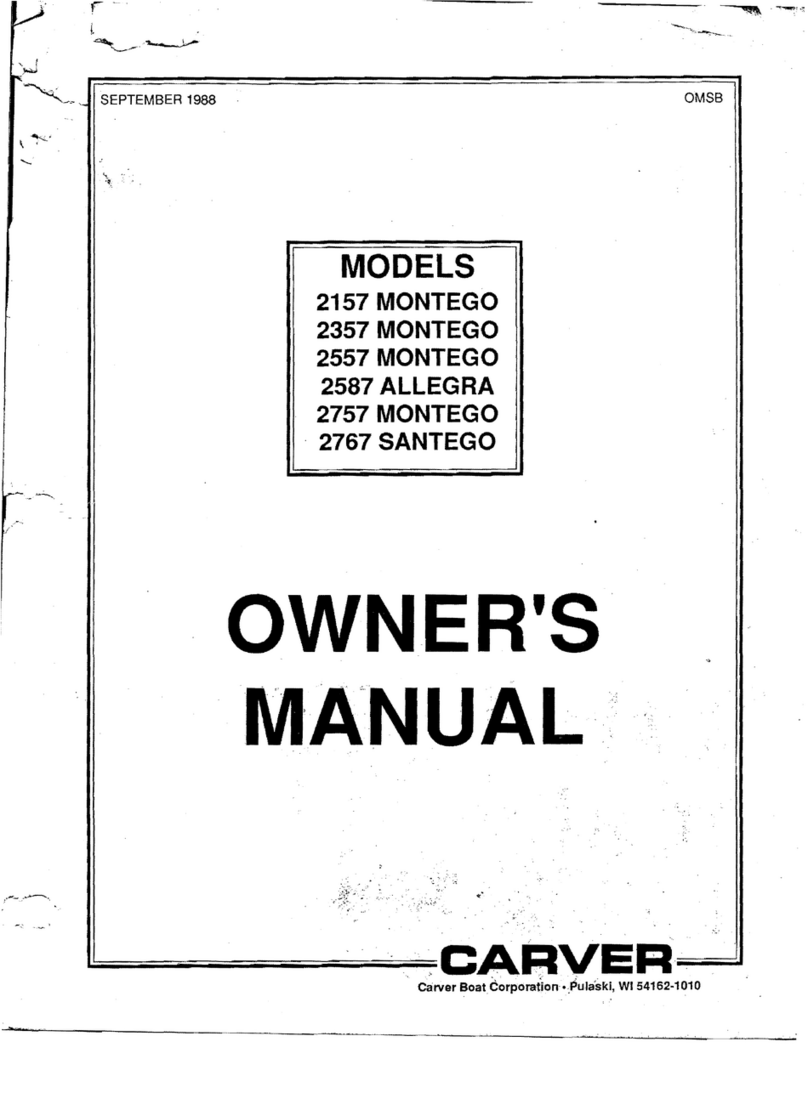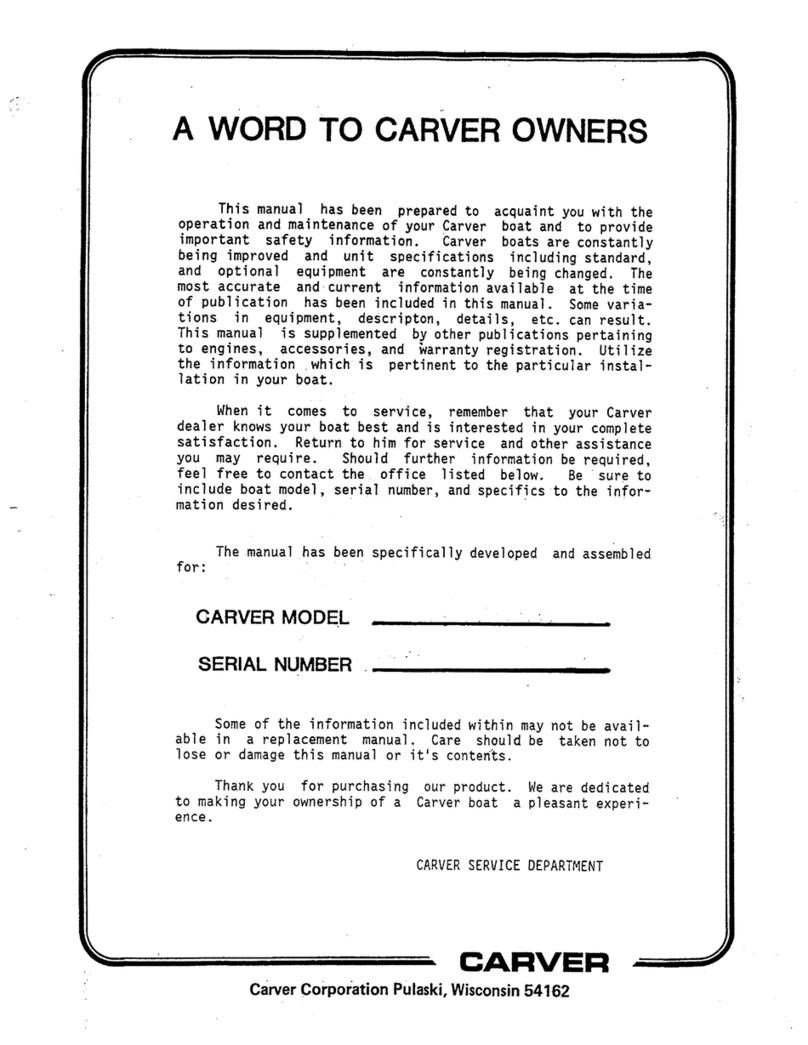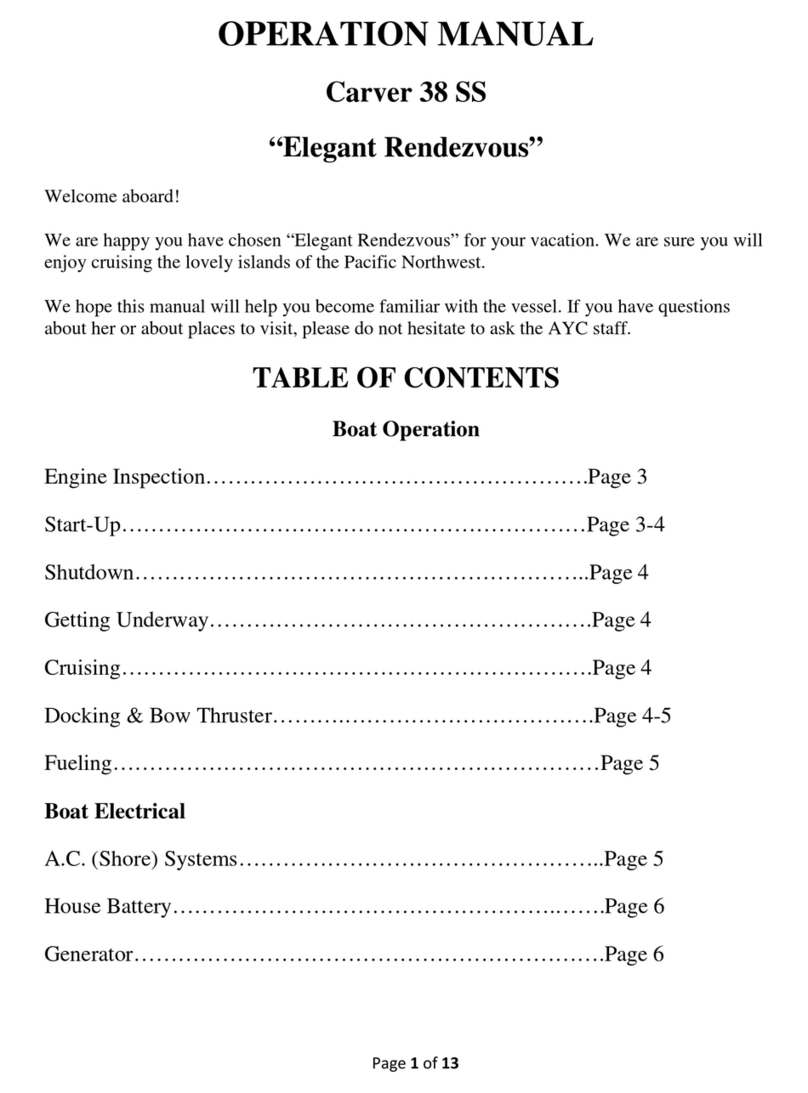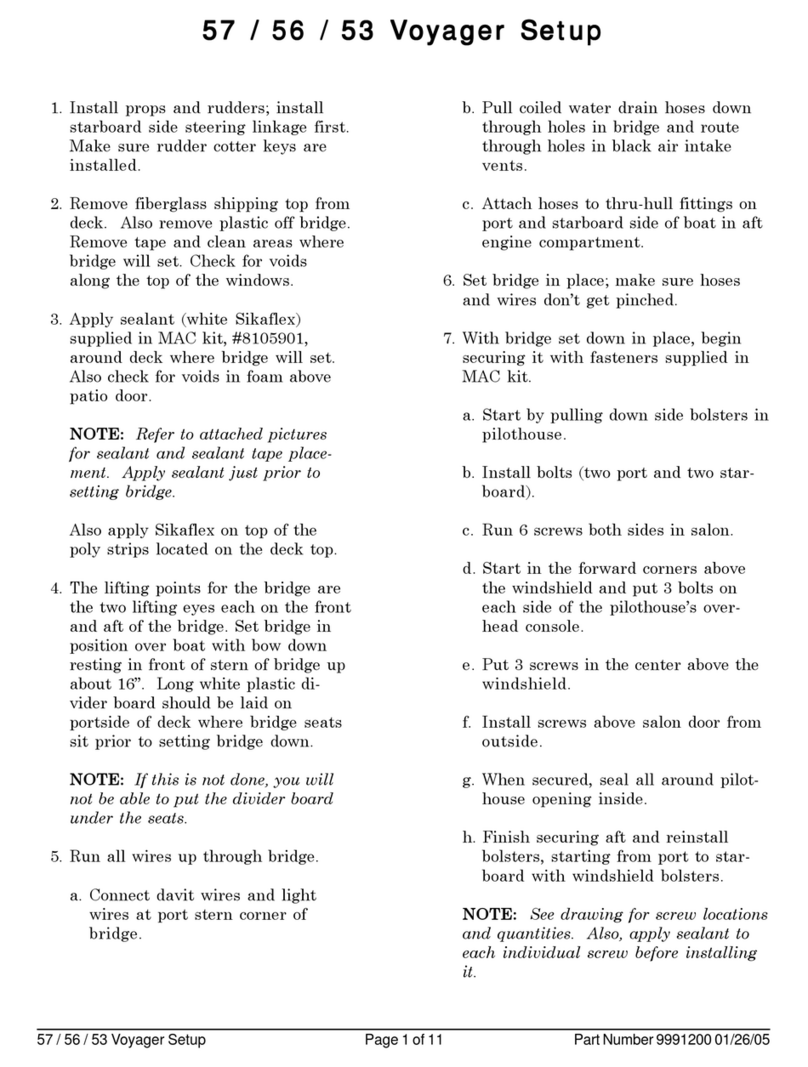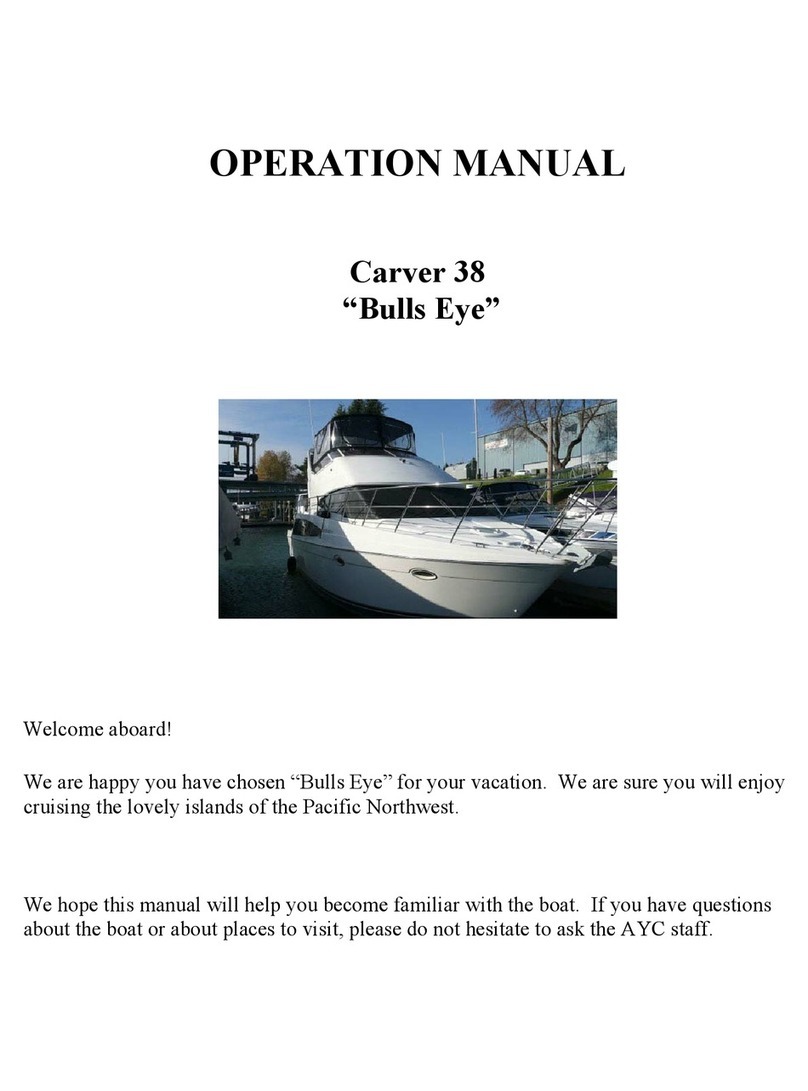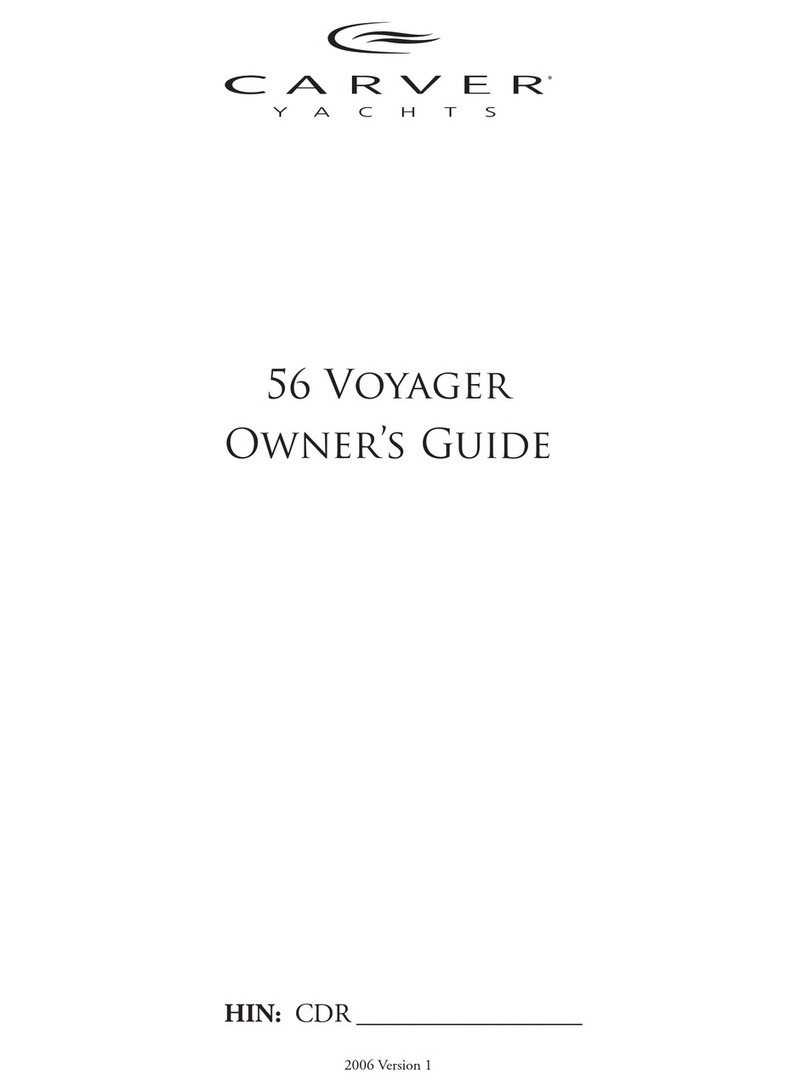
Docking
Prior to docking, rock TRIM TAB switches to “BOW UP” position (8 to 10 seconds) have your crew
make ready the lines and fenders and give clear instructions on how you will be docking. Center the
WHEEL (e.g. rudders straight) and use only the THROTTLE / GEARSHIFTS to maneuver the boat.
Captain should be standing on the right side at the helm with hands on the THROTTLE / GEARSHIFTS
while maneuvering inside the marina! ACTIVATE BOW THRUSTER. Your crew will need to step off
from the swim step with the stern line. Another crew member will need to be at the bow or mid-ships to
hand over the next lines. The bow thruster may be engaged in short bursts to hold the bow against the
dock while lines are put on the dock. DO NOT PUT YOURSELF BETWEEN THE BOAT AND
THE DOCK OR A PILING!
Fueling Up
OPEN FILLER CAP(S) located port and starboard just ahead of cockpit. Open with the DECK FITTING
KEY which is kept in the cabinet on the port side of the cockpit.
MAKE SURE YOU HAVE THE RIGHT FUEL! DIESEL! DIESEL! DIESEL! MAKE SURE IT
IS GOING INTO THE RIGHT DECK FILL! DOUBLE-CHECK! TRIPLE-CHECK!
Before pumping, have an oil/fuel sorbs handy to soak up spilled fuel. Locate fuel vents if possible to
listen for tank becoming full and to know where sorbs may be needed. You should have a rough idea of
the number of gallons you will need by the engine hour indicator. Also periodically have someone turn
on the key to watch the fuel gauge or station a person by tank site glasses to watch fueling progress.
Place the DIESEL nozzle into the tank opening, pump slowly and evenly, and note the sound of the fuel
flow. Pumping too fast may not allow enough time for air to escape, which may result in spouting from
the tank opening. As the tank fills, the sound will rise in pitch or gurgle. Pay attention to the TANK
OVERFLOW VENT on the outside of the hull near the tank opening. The sound may indicate that the
tank is nearly full. Top off carefully, and be prepared to catch spilled fuel. Spillage may result in a nasty
fine from law enforcement.
Replace each tank cap. Turn on blower before starting engines. Caution -- Clean up splatter and spillage
immediately for environmental and health reasons. Wash hands with soap and water thoroughly.
BOAT ELECTRICAL
The electrical system is divided into two distribution systems: 110-volt AC and 12-volt DC.
The systems are controlled from the AC ELECTRICAL PANEL located aft salon starboard side, the DC
AUXILIARY PANEL located aft salon port side and the BATTERY SWITCHES located aft salon
starboard side. When not connected to shore power, batteries are providing all power. Therefore, monitor
the use of battery levels carefully with your volt meter located on the DC panel in the salon. How much
electricity is being drawn from the batteries can be monitored on the ampere meter located on the DC
panel in the salon. Turn off electrical devices that are not needed.
